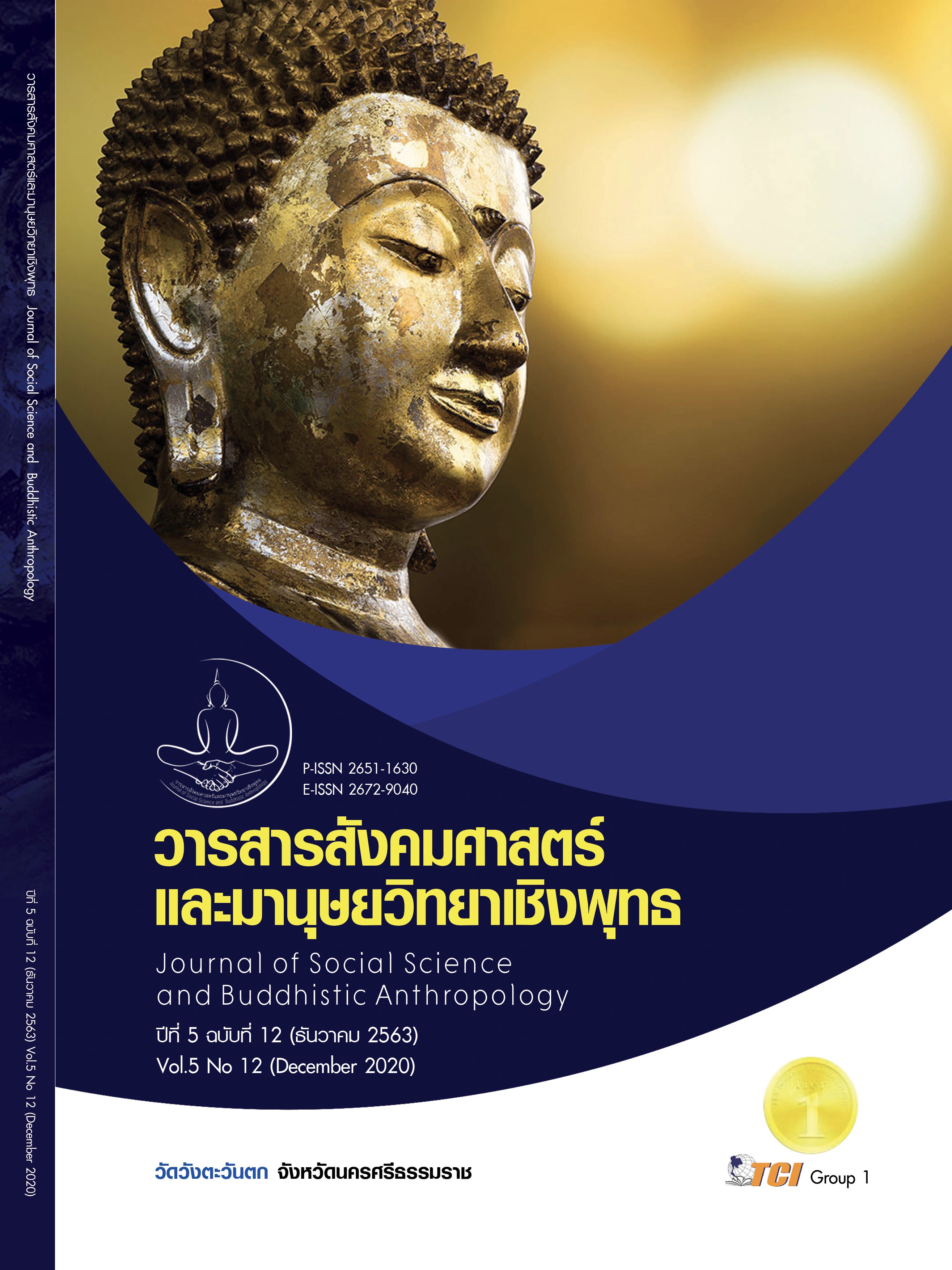GUIDELINES FOR DEVELOPMENT OF A LOCAL CURRICULUM: “THE INTANGIBLE CULTURAL FABRIC WOVEN OF KOH YO” BY YOUTH’S PARTICIPATION IN TOMBON KOH YO MUANG DISTRICT SONGKHLA PROVINCE
Keywords:
Local Curriculum Development Guidelines, Heritage, Wisdom Woven Fabric, Participation, YouthAbstract
The objectives of this research article were to study the local curriculum development guidelines: "Heritage of Wisdom Koh Yo Weaving" the participation form of youth. Tumbol Koh Yo, Muang District, Songkhla Province. Qualitative research methods collect data from observation. In-depth interviews from the main contributors are the owners of Koh Yo 3 weavers and 5 young people using knowledge management methods to create field storage areas for the community to participate in the design of Koh Yo woven fabric courses according to local curriculum development guidelines and disassembly. Knowledge from the owner of the heritage of woven fabric to be synthesized. Organize knowledge into categories and summaries to present descriptive information to each issue. It was found that the community wanted to have a local course of Koh Yo woven fabric that extracted knowledge directly from the owner of Koh Yo's intellectual heritage, namely the knowledge of the history of weaving. The weaving algorithm, the design and application of fabric, which is the course of community engagement as follows: 1) Define objectives 2) Define structures 3) Weaving activity design 4) Measure the evaluation result of the estimated piece of work by the owner of the intellectual heritage. The local woven fabric course is derived from community engagement, a knowledge extracted from the owner of the intellectual heritage to document the complete curriculum and return it to the community as a guide to the development of the local curriculum. The community and interested people have learned the wisdom of Koh Yo woven fabric.
References
กองพัฒนาการศึกษานอกโรงเรียน กรมการศึกษานอกโรงเรียน. (2543). คู่มือการพัฒนาหลักสูตรท้องถิ่น. (ฉบับปรับปรุง). กรุงเทพมหานคร: โรงพิมพ์โอเดียนสโตร์.
ฆนัท ธาตุทอง. (2550). การพัฒนาหลักสูตรท้องถิ่น. นครปฐม: เพชรเกษมการพิมพ์.
ทนงศักดิ์ ปัดสินธุ์. (2551). การพัฒนาหน่วยการเรียนรู้โดยใช้แหล่งเรียนรู้ในชุมชน เรื่อง สิ่งแวดล้อมลำน้ำปาว สำหรับนักเรียน ชั้นประถมศึกษาปีที่ 6. วารสารศึกษาศาสตร์ ฉบับวิจัยบัณฑิตศึกษา มหาวิทยาลัยขอนแก่น, 2(2), 144-151.
นิตย์ พงษ์พฤกษ์. (2553). เกาะยอปริทัศน์. สงขลา: องค์การบริหารตำบลเกาะยอ.
ประเวศ วะสี. (2536). ภูมิปัญญาชาวบ้านกับการพัฒนาชนบท. กรุงเทพมหานคร: อัมรินทร พริ้นติ้งกรุฟ.
วิการดา นรินทร. (2549). การจัดการเรียนรู้ที่เน้นผู้เรียนเป็นสำคัญของสถานศึกษา สังกัดสำนักงานเขตพื้นที่การศึกษาหนองคายเขต 1. มหาสารคาม: มหาวิทยาลัยราชภัฏมหาสารคาม.
วิชัย วงษ์ใหญ่. (2554). การพัฒนาหลักสูตรระดับอุดมศึกษา. (พิมพ์ครั้งที่ 2). กรุงเทพมหานคร: บริษัท อาร์แอนด์ ปริ้นจำกัด.
วีรยุทธ เพชรทอง (ป้าช้าง) เรณู เพชรทอง (ยายเรณู) และ จิต เพชรทอง (ลุงจิต). (19 มกราคม 2563). มรดกภูมิปัญญาผ้าทอเกาะยอ. (พนัชกร พิทธิยะกุล, ผู้สัมภาษณ์)
สงัด อุทรานันท์. (2538). พื้นฐานการพัฒนาหลักสูตร. กรุงเทพมหานคร: วงเดือนการพิมพ์.
สำนักงานคณะกรรมการพัฒนาเศรษฐกิจและสังคมแห่งชาติ. (2559). แผนพัฒนาเศรษฐกิจและสังคมแห่งชาติ ฉบับที่ 11 พ.ศ. 2555- 2559. เรียกใช้เมื่อ 23 ตุลาคม 2562 จาก http://www.nesdb.go.th/Defaul t.aspx?tabid=395
สำลี ทองธิว. (2544). หลักการและกระบวนการพัฒนาหลักสูตรงานอาชีพ. กรุงเทพมหานคร: จุฬาลงกรณ์มหาวิทยาลัย.
อุดม เชยกีวงศ์. (2545). หลักสูตรท้องถิ่น : ยุทธศาสตร์การเรียนรู้. กรุงเทพมหานคร: บรรณกิจ.
Beauchamp, G. A. (1984). Curriculum Theory. (3rd ed.). Lllinois: The Kagg Press.
Hilda Taba. (1992). Curriculum Development Theory and Practice. New York: Harcourt, Brace and World.






